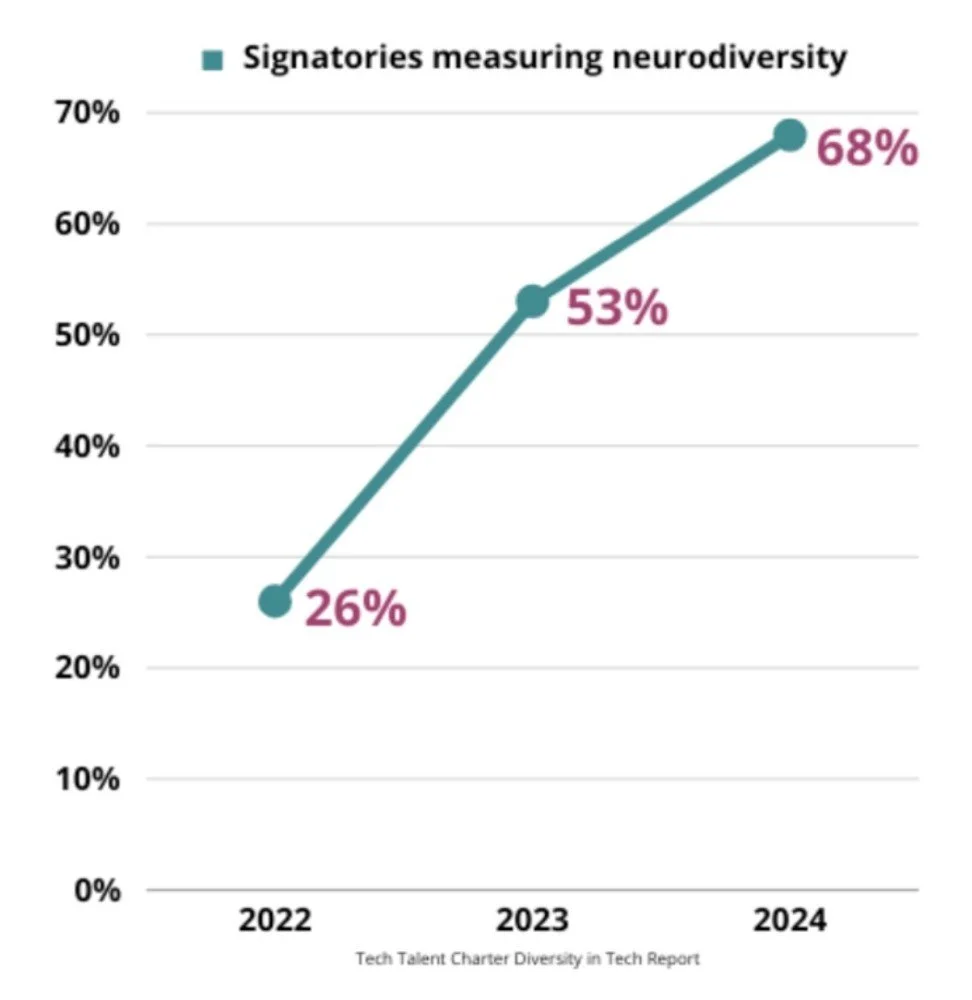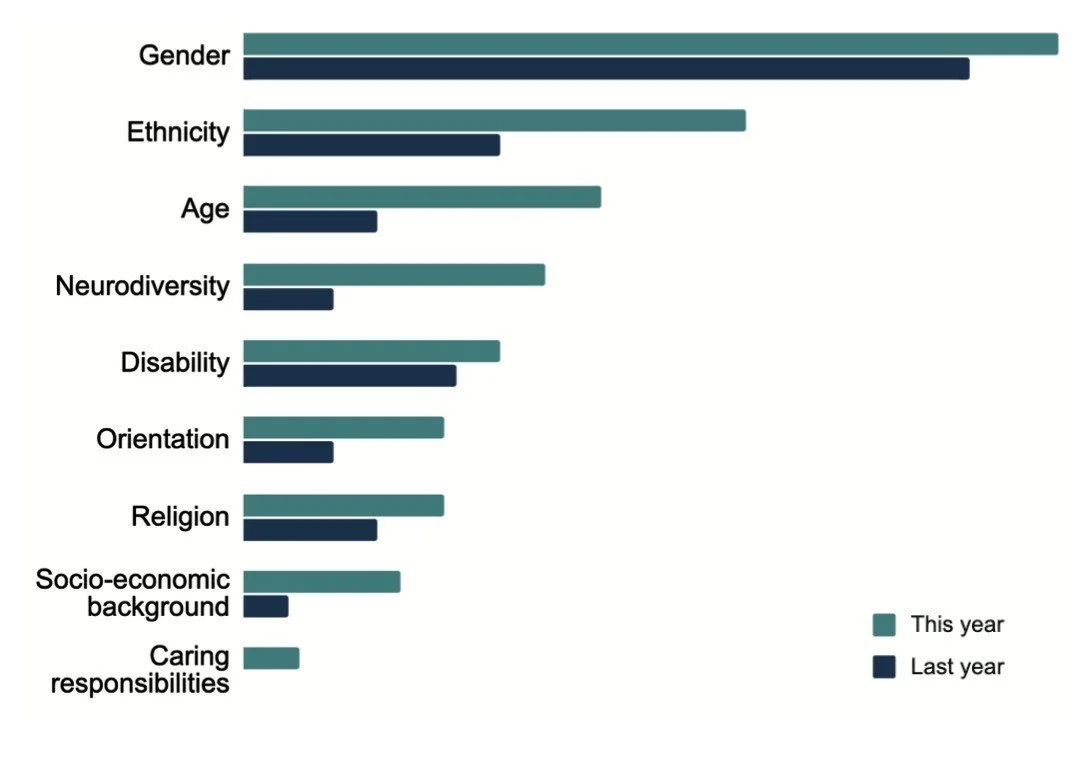Hiring Neurodivergent Talent
Before discussing neurodiversity in recruitment, let’s take a step back and look at inclusive hiring from a wider perspective. What does inclusive hiring mean to you?
For me, it’s an organisation’s approach to attract and hire diverse talent. However, to do that, we need to recognise and address the inequities in hiring processes that create barriers for marginalised groups.
Rajkumari Neogy said:
“To create a truly inclusive environment, we should always seek to fully understand our zones of exclusion and how people want their needs met.”
Zones of exclusion exist in every part of the recruitment lifecycle, such as:
Unclear and confusing job adverts
Convoluted and inaccessible application processes
Biased applicant selection
Interview-type barriers
Biased selection criteria
For example, people with ethnic-sounding names are more likely to have their applications rejected due to unconscious bias. Women are still asked about their families or future plans to have children — despite this being completely illegal.
You’ve probably heard the saying, “It’s not what you know, it’s who you know” — and ain’t that the truth! Referrals are often prioritised over traditional applicants, and affinity bias means referral opportunities are limited for marginalised folks.
From a neurodivergence perspective, navigating the hiring process is a minefield. Unemployment rates are startlingly high; for example, rates for Autistic people in the UK are higher than for any other disability group. Underemployment is also a major issue — when someone is unwillingly working in a lower-skilled and/or lower-paid job than they’re capable of.
What’s the current landscape of neurodiversity in recruitment?
Tech Talent Charters Diversity in Tech Report 2024 showed a sharp increase in the number of their signatories measuring neurodiversity in 2024 compared to the two previous years:
So, organisations are definitely becoming more aware of neurodiversity at work — which is awesome. But what about neurodiversity in recruitment?
According to Tech Talent Charter’s Diversity in Tech Recruitment Report 2024, when recruiters were asked what they planned to focus on in their diversity data, the largest jump year-on-year was in neurodiversity tracking.
Gender remains the most tracked characteristic, but the striking increase in neurodiversity suggests that organisations are beginning to decouple it from disability — treating it as a standalone area of focus.
So, while the intention is clearly growing, intention ≠ action. Neurodivergent candidates are still struggling to navigate hiring processes and secure roles they’re fully capable of doing. Bridging that gap requires more than awareness — it requires systemic redesign.
Common barriers organisations face
Limited understanding of neurodiversity and lack of confidence advocating for it
Fear of saying or doing the wrong thing
Worry about appearing performative
Not knowing where to start
Struggling to get buy-in from hiring teams, managers, and decision-makers
Are we making progress?
Back in my recruitment days, I used to champion transparent interviewing — for example, providing interview questions in advance — and was usually met with scepticism. Clients would say things like, “That’s ridiculous. How would we properly test capability if they can prepare?”
Fast forward a few years, and we’re starting to see progress. Earlier this year, John Lewis announced that they’re publishing interview questions for all roles, for all candidates. Their Talent Acquisition Lead said:
“Interviews can feel daunting, and for some – particularly those who are neurodiverse – nerves can seriously impact performance. We’ve published our interview questions to allow candidates to prepare and confidently demonstrate what they can do.”
As expected, some criticised the approach, arguing they want to “see how candidates think on their feet.”
But if a job doesn’t require rapid-fire problem-solving under pressure, why test for it? Realistically, if someone wants to game the system, they’ll find a way — technology makes that easy. Transparency simply creates fairness, not advantage.
So I applaud John Lewis for setting a new standard. It shows that meaningful change is possible, even if it looks different from how we’ve always done things.
Final thoughts:
Inclusive hiring isn’t about lowering the bar — it’s about removing the barriers that stop great candidates from showing you what they’re capable of.
If your organisation wants to attract and hire more neurodivergent talent, I can help 👋
I work with teams to redesign recruitment processes, run inclusive hiring training for recruiters and managers, and create practical, bias-aware frameworks that make hiring fairer for everyone.
📥 Or use the contact form below and we’ll get back to you within 2 working days.

